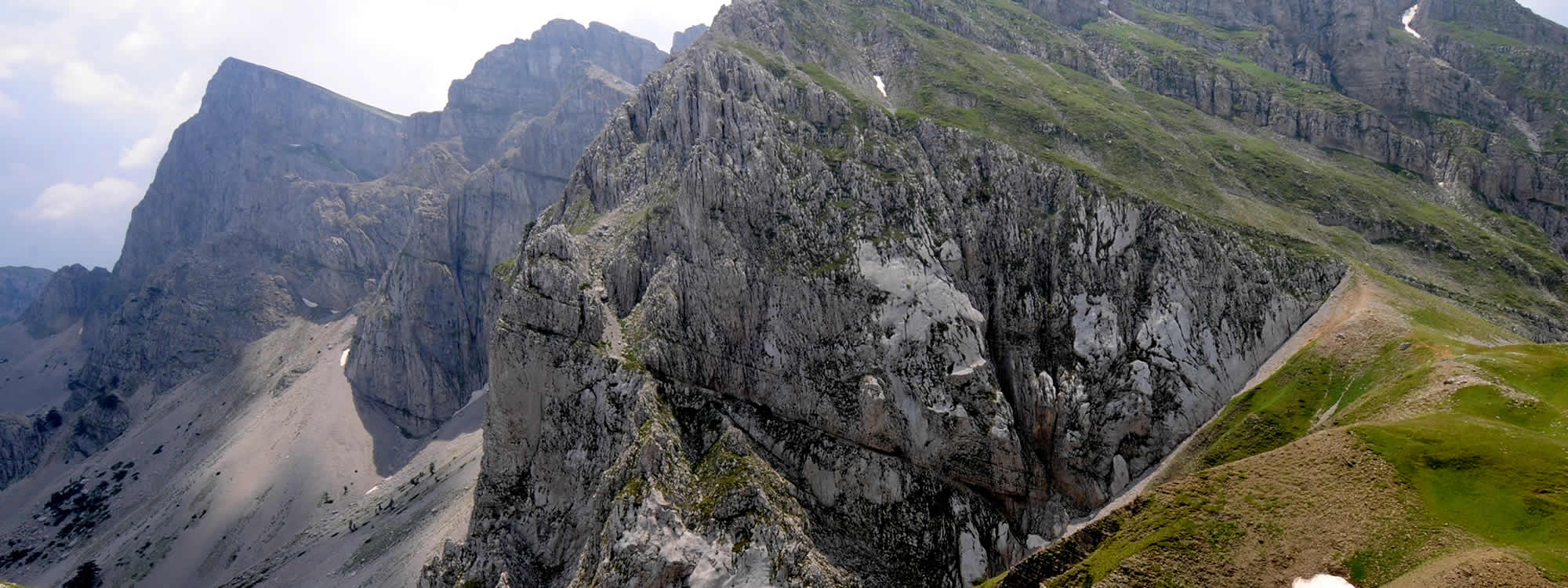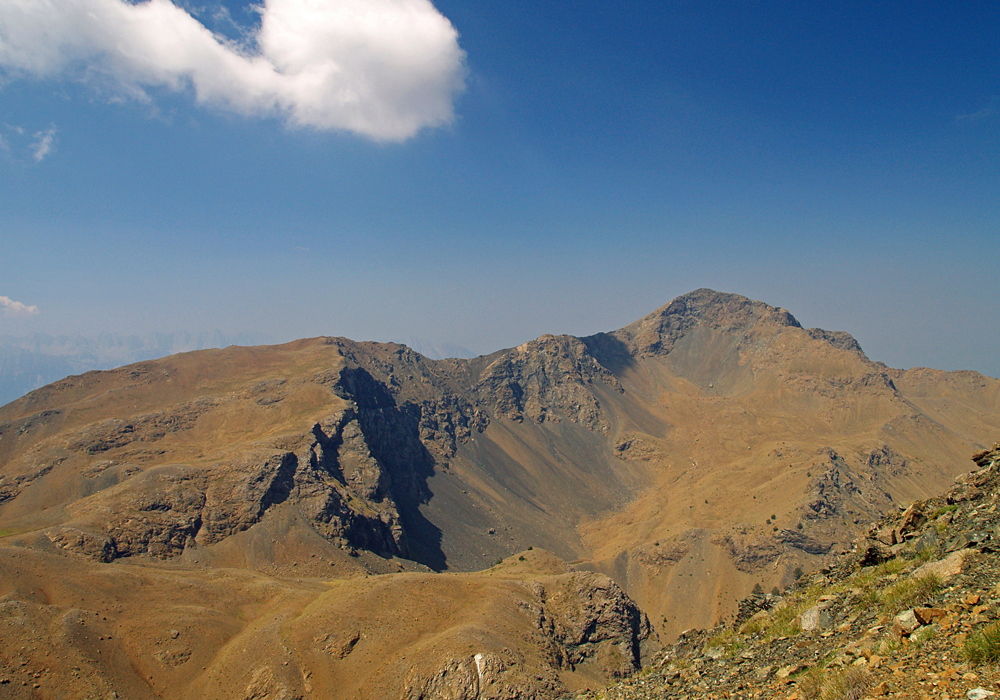The Northern Pindos National Park includes the mountainous complexes that make up the largest part, of the northern Pindos mountain range: the largest and most important mountain range of Greece, with a length of 230 km and a width of 70 kilometers.
Smolikas, the second highest mountain of Greece (2,637m) is included in the Park’s region, also Tymfi (2.497m), Vasilitsa (2.249m), Ligkos (2.177m), Zigos (1.820m) are some of the most important mountain peaks, while the landscape is composed of several other mountains, smaller in size and altitude, such as Trapezitsa (2.022m), Tsouka Rossa (1.987m), Flambouro (1.914m), Kleftis (1.846m), Mitsikeli (1.810m), Koykoyroyntzos (1.785m), Kousta (1.731m), Koziakos (1.622m) and Orliakas (1.446m).
Numerous streams and rivers flow from the rocky mountain peaks and the woody slopes. Most of them flow to rivers Arachtos, Aliakmonas and Sarantaporo which represent the outer natural limits of the Northern Pindos protected area. In the inner of the area, the rivers Aoos, Voidomatis, and Arkoudorema travel through the National Forests of Vikos-Apoos and Valia Calda respectively.
The climate conditions that prevail at the protected area are the typical ones in high mountains with rich forests. The climate, of the area is between the Mediterranean and the mid-European climate with cold winters and cool and humid summers. It varies depending on the altitude and it is affected by the multifarious terrain.
The area receives the highest amount of rainfall in Greece, a fact that is imprinted to the extended plant coverage of the area. Most of the rainfalls are noted at Tymfi and at the mountains of Central Zagori, at Metsovo, at Eastern Zagori, at Smolikas, whilst at Western Zagori, Konitsa and Grevena less rainfall is noted.
- At higher altitudes, the winters are harsh with low temperatures, cloudiness, plenty of rainfalls, ice, frequent snowfalls and extended snow coverage from October to May.
- At lower altitudes, the climate is milder, snow coverage lasts for a few weeks, the ice period is shortened from November to April and the rainfalls are less during summer.
- The average yearly temperature at the settlements varies from 10 to 14 degrees Celsius and the annual temperature width is particularly high.






